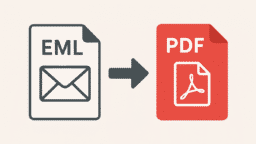Blockchain technology is changing the way companies construct and trust decentralized applications or dApps. Center to enterprise-level solutions is Hyperledger, an open-source framework under the Linux Foundation and backed by an international consortium of industry powerhouses.
In contrast to public blockchains, Hyperledger frameworks are designed for permissioned setups. Hyperledger application development provides enterprise-level reliability, modularity, and control.
In this post, we’ll explore how Hyperledger fuels dApp innovation across sectors. We’ll cover its governance, key frameworks, business features, and how to choose expert development partners.
Understanding Hyperledger’s Role in Decentralized App Development

Hyperledger facilitates an open, community-driven platform where organizations have the capability to co-create secure and efficient blockchain solutions that meet actual business needs. Its permissioned nature differentiates it from public blockchains, allowing verified participation and improved data confidentiality. These are essential aspects for sectors dealing with complex regulatory environments.
Hyperledger Fabric application development bridges the gap between decentralization and enterprise requirements and empowers developers to build dApps that are practical and secure.
Open-Source Governance Under the Linux Foundation
Hyperledger is hosted by the Linux Foundation and sponsored by more than 350 institutions worldwide, including industry leaders such as IBM, Intel, and Cisco. Through an open governance model, it encourages collaboration and real-world innovation across the industry.
Permissioned vs Public Blockchain: Why It Matters for dApps
Unlike public blockchains, Hyperledger platforms are permitted. That means every participant is known and verified. This approach gives companies the security and regulatory compliance they need, without sacrificing the decentralized ethos.
Core Frameworks Powering the Hyperledger Ecosystem

The Hyperledger environment is built upon a broad range of blockchain platforms, each of which is intended to meet different enterprise and technical needs. The underlying foundation platforms offer decentralized application builders an open and flexible toolkit to build apps addressing identity management, digital assets, and mobile integration.
Hyperledger Indy: Decentralized Identity and DIDs
Hyperledger Indy is designed for decentralized identity, providing for self-sovereign identity (SSI) and allowing users to control personal data and share it on an opt-in basis. It is a key capability for healthcare, finance, and government applications with privacy-by-design requirements.
Indy supports decentralized identifiers (DIDs) and verifiable credential schemas stored on a permissioned blockchain, while actual credentials remain off-ledger in secure digital wallets. This model provides privacy, scalability, and platform interoperability. It has built-in support for zero-knowledge proofs, which enables users to verify facts about themselves without exposing underlying information.
Hyperledger Fabric: Modular Architecture and Smart Contracts
Fabric is a production-stage, modular blockchain platform that offers support for chaincode – Go, Node.js, or Java-based smart contracts. It provides identity management, membership services, and private channels. These features make it a foundation for Hyperledger application development, allowing developers to create tailored blockchain applications across sectors.
Current reports show that Fabric is stable and maturing with a long-term support release (v2.5) and quality-driven active development. An important innovation is Fabric-X, a next-generation implementation optimized for regulated digital assets, featuring a dynamic contract lifecycle, parallel processing, and token-native architecture.
Hyperledger Sawtooth: Pluggable Consensus and PoET
Hyperledger Sawtooth is a distributed ledger framework that accommodates pluggable consensus protocols and supports developers in customizing the consensus process to suit their application.
Proof of Elapsed Time (PoET) is its most popular algorithm, which uses trusted execution environments (TEEs) to randomly distribute the rights of block creation in a reasonable and energy-efficient way. This makes PoET best suited for business uses that need scalability without the enormous energy expenditures of the conventional Proof of Work systems.
Sawtooth also has support for other consensus choices, such as Raft and PBFT. This enables networks to select based on their trust model, throughput requirements, and fault tolerance.
Sawtooth’s architecture separates the core blockchain logic from application-specific transaction processing to enable rapid development of custom smart contracts and families of transactions. These design ideas map quite well onto Hyperledger Fabric application development, where modularity and flexibility enable scalable enterprise blockchain solutions.
Hyperledger Iroha: Agile Blockchain Framework for Mobile Ecosystems
Hyperledger Iroha is an efficient and modular blockchain framework with a light architecture suited for mobile and embedded systems. Its lightweight design is best suited for mobile-first applications and resource-constrained environments, such as micro-finance, IoT, and digital identity systems.
Iroha’s architecture is centered on simplicity, reliability, and developer usability. It provides a crash fault-tolerant consensus algorithm called Sumeragi, with support for parallel and out-of-order instruction execution to enhance performance and robustness. The platform also accommodates fine-grained access control, modularity of transaction processing, and basic smart contracts.
Key Features Promoting Enterprise Adoption of Hyperledger

Hyperledger seeks to provide configurable blockchain platforms optimized for business requirements. Private channels for secure transactions and chaincode for execution of business logic are some of the features that make Hyperledger Fabric crucial for developing high-quality decentralized systems.
These features enhance data privacy and operational effectiveness, and ease integration with the current IT infrastructure. This makes Hyperledger application development compelling for industries undergoing complex digital transformation.
Private Channels for Confidential Transactions
Hyperledger Fabric helps create private channels- isolated sub-networks within the blockchain. These channels allow a select group of participants to transact and share data confidentially, without exposing sensitive information to the entire network.
This feature benefits sectors like finance, where transaction privacy is paramount, and supply chain, where proprietary data must be protected. Private channels also support regulatory compliance via granular access control and auditability.
Chaincode for Business Logic Execution
Chaincode in Fabric is the smart contract layer that contains business logic to manage transactions. Chaincode can be written by developers in languages such as Go, Node.js, or Java, which accelerates development and eases onboarding friction for enterprise teams.
This flexibility enables organizations to encode sophisticated business flows and apply rules to the blockchain directly. Chaincode also includes versioning and lifecycle management, facilitating easy updating and management of business logic as it changes.
PKCS#11-Based Identity Management with HSM Support
Fabric’s identity system is PKCS#11 (a cryptographic token interface standard) and Hardware Security Modules (HSMs) compatible. This ensures that cryptographic keys are stored, generated, and handled in tamper-resistant environments.
Organizations benefit from authentication and data protection regulation compliance, like GDPR and HIPAA. Such capabilities benefit sectors like healthcare and finance, where identity certainty and data integrity are critical.
Selecting a Hyperledger Fabric Development Company

Selecting the right development partner enables the optimum utilization of Hyperledger Fabric in commercial blockchain initiatives. With its modular design and advanced privacy capabilities, Fabric requires expert skills beyond general blockchain development.
The ideal Hyperledger Fabric development company must have a proven record in deploying Fabric in top industries such as supply chain, finance, and identity management. An understanding of security mechanisms, chaincode deployment, and governance models is required, along with active contribution to the Hyperledger community.
Ways to Evaluate Hyperledger Fabric Development Services
The following are the primary criteria companies must consider while selecting Hyperledger Fabric development services:
Proven Track Record
A history of effective Fabric deployments in verticals like supply chain management, digital identities, and financial services is a strong capability indicator. Search for case studies or client success stories that showcase the company’s ability to handle complex workflows and integrate with legacy systems.
Certified Expertise
Seek out Hyperledger Certified Service Providers (HCSPs). They are firms officially certified for their experience with deploying and running Hyperledger technology.
Certification guarantees that the company adheres to best practices, stays up to date with the newest platform advancements, and has access to resources from the Hyperledger community. HCSPs are better positioned to deliver stable, scalable, and compliant solutions in harmony with enterprise needs.
Active Community Engagement
An active contribution to Hyperledger projects, code commits, documentation, or working group participation by a firm signifies a strong commitment to the Hyperledger ecosystem.
Usage of platforms such as Fabric, Indy, Sawtooth, or newer innovations such as Fabric-X demonstrates thought leadership. These contributors tend to be at the forefront in implementing new features and setting the direction of the technology.
Security and Governance Skills
A Hyperledger Fabric development company should have expertise in chaincode architecture, private channel configuration, and PKI integration using HSMs. These aspects help create permissioned, secure networks that safeguard sensitive information and enforce governance policies.
A firm’s robust security background promotes the implementation of role-based access control, audit trails, and cryptographic mechanisms that meet enterprise-grade standards.
Conclusion

Hyperledger application development is evolving decentralized applications across industries. It brings together governance, modular architecture, and enterprise-level capabilities to support next-gen dApps that preserve confidentiality and address regulatory requirements.
From tracking goods through global shipping chains to managing digital identities and tokenized assets, Hyperledger platforms are unlocking a decentralized future based on trust and enterprise readiness.
As companies shift towards dApps, collaboration with a niche Hyperledger Fabric application development company means doing more than just deploying code. It’s about gaining strategy, security, ROI, and a foundation built for tomorrow’s decentralized economy. Are you ready to build trust at scale and lead the transformation into a decentralized future?






